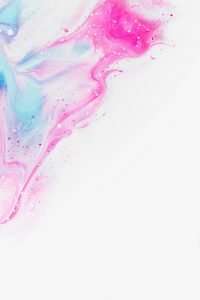Abstract art is a 20th-century artistic movement with the goal of distilling all of the meaningful content from a piece of art down to the very essence. By eliminating recognizable imagery, artists could free their work from the constraints of realism and regular aesthetics.
The term “modern” abstract art was coined by an art critic in 1911, who described the works he admired as “abstract” and “modern.” The style had been developing for decades, but it wasn’t until that time that artists began to call their work abstract.
Abstract art developed from avant-garde movements in Europe following World War I: Dadaism, Futurism, Constructivism and Suprematism. These movements rejected traditional techniques and subjects for painting in favor of new rules and ideas. Suprematism, for example, abandoned natural forms altogether in favor of geometric shapes and patterns.
Certainly many people consider modern abstract art as nonrepresentational or nonobjective. It is true that many abstract works are nonrepresentational; they don’t depict objects or scenes from nature. However, not every abstract artwork is nonobjective; sometimes abstract artists do intend to depict a specific object or scene with their abstraction.
For example, Piet Mondrian’s Broadway Boogie-Woogie
Abstract art is a modern art form that can be found in all corners of the world. It is a general term used to describe and define a style of painting or sculpting that does not depict an object or person but creates a new image or sensation through the use of line, color, form and space. A similar comparison could be made between modern abstract art and impressionism.
Towards the end of the nineteenth century, as science was becoming more popular, artists began turning away from traditional forms of representation in order to more accurately reflect the new world that was being created by science. Artists such as Paul Cezanne, Vincent van Gogh and Henri Matisse began moving towards abstraction in order to show viewers what they were feeling rather than what they were seeing. The abstract artist seeks to express ideas and emotions rather than imitating reality. This is why abstract art is also called non-objective art.
Abstract art, like any other form of art, typically has a message behind it. The messages are derived from personal experiences, cultural influences and/or spiritual beliefs that are reflected through the artwork. Many artists who create abstract works are essentially making commentary on society through their work, especially if it is politically charged. Their works often reflect ideologies that seek to challenge
Abstract art is a modern style of painting and sculpture where the artist uses shapes and colors in an attempt to convey his own ideas or emotions in a work of art. The motive of abstract art is to express the artist’s feelings or thoughts about things or ideas, rather than to faithfully reproduce what is seen.
Go through the following section and learn about the history of abstract art, how it emerged and how it has evolved in modern times.
Abstract art was born in the early twentieth century, when a movement of visual artists emerged with the intent of creating works that were purely abstract — that is, not representational. This movement eventually became known as Abstract Expressionism, and it encompassed a broad range of styles and mediums.
Towards the end of the 19th century and into the early 20th century, there was a growing trend in the visual arts towards abstraction. Artists were attempting to break free from convention by abandoning traditional concepts of representation. However, these movements were not generally considered abstract art and are now considered precursors to abstract art.
The main founders of this new style of visual art included Wassily Kandinsky and Kazimir Malevich. Each developed his own unique abstract style and they influenced other contemporary artists who also wanted to explore this new direction in their work.
The first significant development in what we now consider abstract art came around 1912 when Wassily Kandinsky painted several pieces that included pure abstraction elements rather than figurative representations or naturalistic images. He called these paintings “Concerning the Spiritual In Art”. Kandinsky was an important figure in the development of both abstract painting and nonrepresentational painting.
In 1915, Kazimir Malevich created paintings that, for the first
Abstract art is just like any other type of art, with one exception. In abstract art, the subject matter is not important. The colors and shapes are what make the painting worth looking at. Abstract art first became popular in the 20th century. The earliest abstract artist was Wassily Kandinsky. He was born in Moscow, Russia on December 4, 1866. Some of his most famous works were painted after 1910. This is when Kandinsky began to focus on pure abstraction. He used bright colors to create interesting patterns and shapes that were pleasing to look at.
Toward the end of his career, Kandinsky started using some figurative elements in his paintings again. He also started working with collages and printmaking in addition to painting. This led him to focus on the more spiritual side of art instead of just focusing on color and form.
The next major abstract artist was Piet Mondrian. He was born on March 7, 1872 in Amersfoort, Holland. His most famous works were done after 1914 when he moved to Paris France and started working with cubism. He used strong vertical lines and blocks of primary colors to create his artwork rather than free flowing brush strokes like Kandinsky did during this time period. In fact, Mondrian’s
Abstract art is a modern art form that is characterized by the absence of a representational element. It was developed in the early 20th century as a result of progressive movements such as Cubism, Fauvism, and Futurism. Although abstract art is considered to be “non-figurative,” this result of modernism did not occur without its share of controversy. Abstract artists were criticized for ignoring the rules of artistic practice.
Towards the end of the 19th century, the Impressionists developed an interest in capturing light and color through their brushstrokes. This technique became known as Impressionism and was a significant departure from traditional landscape paintings that relied heavily on realistic imagery. These artists were not interested in creating a painting that accurately depicts a subject; instead, they were focused on conveying their own feelings through brushstrokes and colors that evoke certain emotions.
This new way of painting was greatly influenced by Paul Cezanne, who used geometric shapes and broken colors to achieve his desired effect. During this period, there was an emphasis on experimentation with colors and brushstrokes which became the basis for what we now know as abstract art.
The movement towards abstract painting gained momentum in 1905 when Pablo Picasso created his famous piece
Abstract art is a style of painting and sculpture characterized by the use of geometric forms. It developed as an independent art form in the early 20th century in Europe and it is closely related to abstract expressionism, which developed in the 1950s and 1960s.
Artists who created abstract art during the first half of the twentieth century were influenced by modernism and by avant-garde art. The influence of modernism is reflected in their choice of colors, materials, subject matter and their desire to convey feelings rather than imitate objects realistically.
Artists such as Wassily Kandinsky, Piet Mondrian, Kazimir Malevich, František Kupka, and later Joan Miró, Max Bill and Kurt Schwitters took this desire even further by emphasizing elements such as color and shape or line over representation or imitation of natural forms.
Abstract art was also influenced by Russian Futurism which was a reaction against realism and traditional representation. In Russia there was also an influential group Purism which made sense of abstract art by relating it to mathematics and science. These ideas were adopted and further developed in other European countries after World War I.



